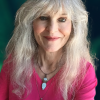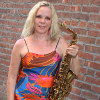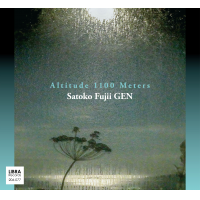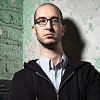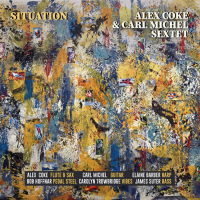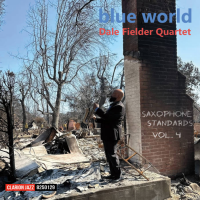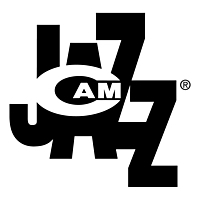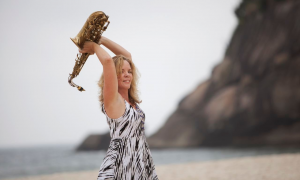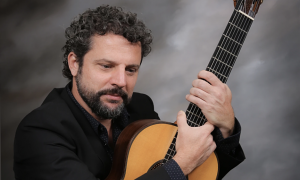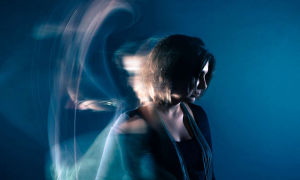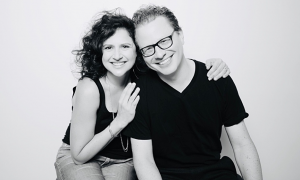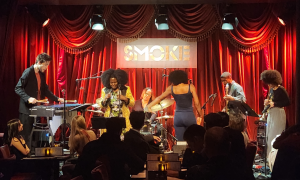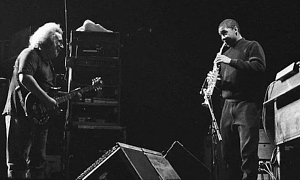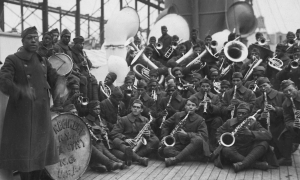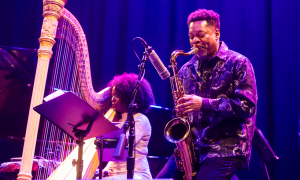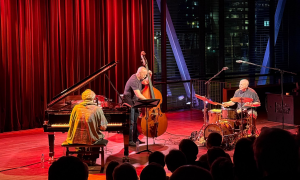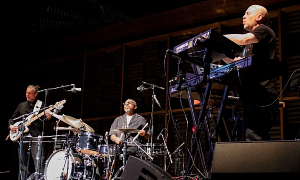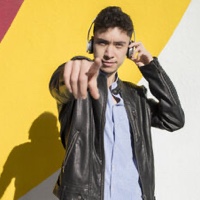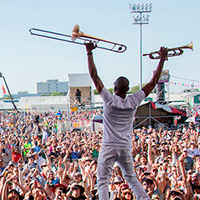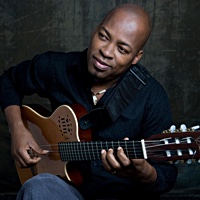Home » Jazz Articles » Caminhos do Jazz » Laura Dreyer: Dancing Through Time
Laura Dreyer: Dancing Through Time
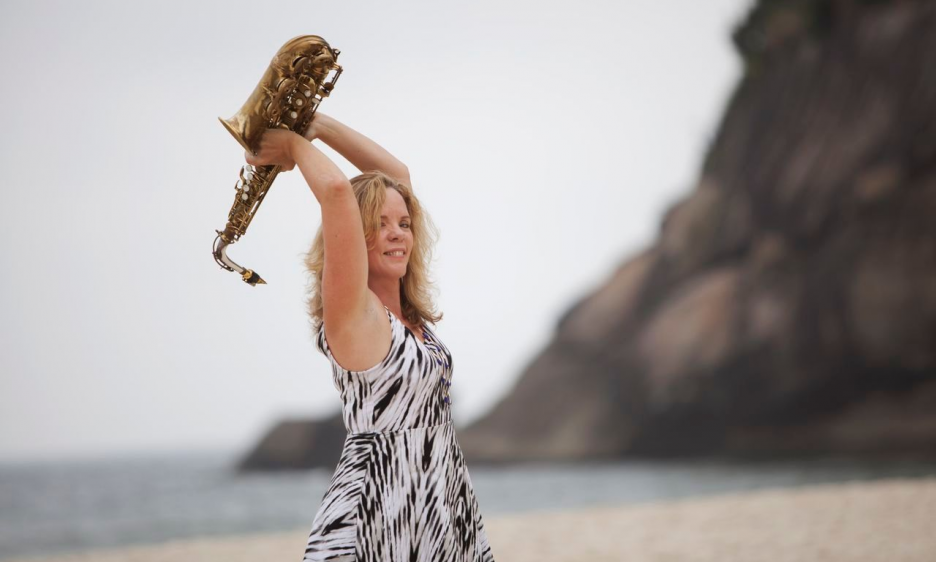
Courtesy Debora Setenta
It felt like being in two dimensions at once. I was back there in my youth, and I was there in the present. Around every corner there was a new memory. And this song was going through my head as I was wandering around, up and down the hills...
—Laura Dreyer
At the urging of friends, Dreyer moved to New York City in 1982. Her first trip to Brazil was in 2010, when she went with Dom Salvador to perform at The CopaFest in Rio in celebration Dom Salvador Sextet's The Art of Samba Jazz, (Salmarsi Records, 2010), on which Dreyer collaborated. In a joyous arc that has returned to its point of departure, Dreyer's Água e Sol (Self Produced, 2025) features Salvador on piano.
Água e Sol is her first full album a leader since her 2014 release, Vida. Arte. Amor (Mayimba Jazz Records), save for a pair of singles on the Lavasphere imprint in 2023 ("O Macaco Azul") and 2022 ("Floating"). Her eclectic and growing discography lists some 25 projects since the late '90s, with albums as a leader and as an in-demand side person.
Dreyer's spirit of adventure and dedication pertains to her numerous avocations as well as her work as a musician. Over the years, these have included theater and playwriting, music journalism, web design and improvisational comedy. "I have all these weird hobbies," she chuckles. "I'll do them for five years really intensely then I'll just stop and do something else." Her hobbies feed into the mainstream of her musical life and into her teaching practice.
Below is an edited excerpt of a free-ranging conversation with AAJ on March 8, 2025, which touched on her connections with improvisational comedy, sound concepts for the Manhattan-Rio Connection, her 2025 grant project, compositions on the recording, the band's origin story and her own musical upbringing.
Genesis of The Manhattan-Rio Connection
Laura Dreyer: About 20 years ago I was working with a booking agent in DC, and she and I were brainstorming about a name for my band that encapsulated what it was that I was trying to do. What I realized was that, as an American jazz musician living in New York City and somebody who's deeply into Brazilian music, I connected with a community of Brazilian musicians here, many of whom were here because they wanted to learn American jazz. This is kind of as opposed to people who play more traditional things, like choro bands or repertory bands where you play other peoples' music. I've always been a composer, and my focus has always been writing original music. I've worked very hard for decades to learn how to authentically write in a Brazilian jazz idiom, but I still like to write my own music.So that's what I started calling the band in about 2016, I would just use that title. If I had a gig in New York, I would use my New York musicians, but if I travelled I would—I still do—use that name. If I go to San Francisco, I play with Marcos Silva and bunch of people out there. Some of them are Brazilian, some are American and some are German, whatever. But our main synthesis is that we love jazz and we love Brazilian music. We like to improvise on Brazilian music in a way that a jazz musician would, rather than, say, just a little eight-bar solo that's more decoration.
Água e Sol
LD: After Covid hit, two of the musicians in the band I had been playing with moved out of the country. One of the musicians lives far away now and isn't able to get in and play as much as he used to do. I was kind of lost for a while, I didn't really have a band. So I started applying for grants. I just needed a reboot. Probably since 2020, I've been applying for different grants and I hadn't gotten any until 2024, when I received a Chamber Music America Performance Plus grant. But during that period of time from 2020 until now, I've had a lot of different gigs with people, Brazilian gigs, and I was able to decide what I would like to do differently, how I would like to make my music better and how I'd like the concept to be.Very serendipitously, a lot of stuff happened with this. For instance, I was walking home and about two blocks from my house I ran into this Brazilian bassist who was with a guy, and he said, "This is the best Brazilian drummer in New York City." So I said, "Let me have your number," and we got together and played and he's amazing, Dennis (Bulhões). He has a studio two blocks from where I live, so he's in the band.
And earlier, probably 2016, again I was walking in my neighborhood, walking to the subway and I ran into Luiz Simas, a pianist and vocalist and a great lyricist. I told him I had written a song that needed lyrics, and we were kind of both kind of feeling the angst about what was happening in 2016, both in Brazil and in the US, so my song is called "Samba da Esperança," and he was inspired to write lyrics based on the feeling of division in the countries. I won't go into too much detail, but you know what I'm talking about. So I kind of put that song aside. We tried to get some other people to record it and then when I got this grant, I thought, OK, it's time to record this song.
I got the grant, and I got my dream band basically. (Band members include guitarist Eduardo Mercuri, bassist Gili Lopes, percussionist Fernando Saci, drummer Dennis Bulhões, singer Jackie Ribas, keyboardist Dario Eskenazi and drummer Graciliano Zambonin. )
The grant stipulates that I had to choose a mentor and a band, but the mentor can't be in the band, so I chose Dom Salvador because, who else? He would be the perfect mentor. He's got so much knowledge and he's somebody that has shaped the music for decades. He's credited with being a creator of samba-jazz, led the first trio to play with Elis Regina. He has so much history and he knows so much. I thought, "I'm going to use this as an opportunity to learn from somebody—how can I make this better?—so he was my mentor." So the original pianist was another guy and the second day of rehearsal he got a call that his mother had passed away. So he went back to Argentina.
So I said to Salvador, "OK, you're the pianist now." I had to clear it with the grant people, but when I heard him play, I realized that he brings something so special to the music, something I don't think I could have achieved with anybody but him. So that's how this project came together. The grant was to make the recording...
All About Jazz: So these are all your tunes?
LD: Yes.
AAJ: Here's a little 2025 side question: Have you ever used genAI as a musician?
LD: I have never used AI in my music. I don't intend to ever use it in my composition process. I don't want to use AI for composing because I don't need to, I generally know what I want and how to notate it!
The Tunes
AAJ: Let's talk about the compositions on your new album. "Água e Sol," what is that about?LD: "Água e Sol" is kind of my tribute to Elis Regina. I was listening to her a lot during this period of time, and I wanted to capture something that had that Cesar Camargo Mariano-Elis Regina feel to it. I was also thinking about what it looks like when you first see the city of Rio, when you see the mountains and you're getting this view of the ocean and the beaches and this feeling I have of—it's just such immense beauty. That was in my mind when I wrote that song. It's a samba, but has a similar feel to "Brigas Nunca Mais" (Elis Regina and Antonio Carlos Jobim, Elis & Tom, Philips, 1974).
AAJ: What was the seed for "Inocência?"
LD: I was doing some stuff at a public access television station, and I wanted to do a free public access television show for children as a way to sort of equalize—for children who didn't have access to music education. I was feeling that it's not fair that some people get to learn it and some people don't. I was writing a bunch of songs, and so originally that was going to be a song about the meter 3/4. It has lyrics. And then I decided to see what would happen if I turned it into 6/8, with more syncopations and more of a Latin feel as opposed to swing. I called it "Inocência" because I teach a lot of children and sort of helping to shape their minds, give them music and stuff, and I'm always kind of moved—affected. It's kind of a sadness, you know. There's so much stress and tension going on that young people have to deal with now. So that's what that song is about.
AAJ: How about "Viagem Para Dakar?"
LD: That's a baião. So last year—in 2024—I went to Dakar with Dom Salvador. We did a couple of gigs and saw a lot of Dakar and one of the places we visited was Goree Island. And as I stepped off the boat, I felt that the spirits were singing that song in my head. And it was so strong that I just picked up my phone and I recorded it. It was so strong. I was hearing those voices singing that song. That was one of the deepest places I've ever been to in my life, in terms of really reckoning with what's happened, how humans can treat other humans, the atrocity. It was pretty heavy.
AAJ: It's a beautiful tune. It feels mostly joyous, not heavy.
LD: I wanted to describe the joy, too, within the culture, too. But that middle section, Salvador plays on it, I wanted to be kind of reflective, taking into account that this is what happened to people, you know.
AAJ: And "O Verão do Nosso Amor?"
LD: My friend Katie Veni asked me to write a song for her wedding and to perform it as she walked down the aisle. And she got married in the summer, so that's what that was. It's a bossa nova.
AAJ: Tell us about "Dancing Through Time."
LD: This past summer, I got stuck in that CrowdStrike thing out in San Francisco. (Dreyer refers to an IT outage of unprecedented proportions caused by a faulty software update by CrowdStrike, a cybersecurity company, which crashed millions of Windows systems in July 2024, causing massive havoc in the city and beyond.)
I was unable to fly back to New York, stranded at the airport. It was awful. I won't go into the details, but I ended up going back and staying in San Francisco for an extended period of time with a friend of mine. I grew up in the Bay Area and spent a lot of time in San Francisco when I was a kid and a teenager. But I hadn't had a chance to really just hang out there for any length of time, like I used to.
So I spent that week just walking around, and kept having flashbacks of, "Oh, my God, I remember this place." Just memories of things I used to do there and all the adventures I had. It felt like being in two dimensions at once. I was back there in my youth, and I was there in the present. Around every corner there was a new memory. And this song was going through my head as I was wandering around, up and down the hills. It's a straight samba and a partido alto, it goes back and forth.
AAJ: Very nice. And the "Dolphin Dreamscape?"
LD: That's an afoxé. I wrote a version of the song a long time ago, but I ended up rewriting the A-section. I was thinking of the Northeast and the Amazon. I was originally going to call it "The Dream of the Pink Dolphin" but then my Brazilian friend told me that there's a legend in the Amazon region that a pink dolphin turns into a man at night and rapes women, so I said, "OK, I'm not calling it that."
AAJ: And you already spoke of "Samba da Esperança..."
LD: Yeah, and the lyrics are sort of saying how wonderful it would be if we could be in a world where we live in peace; sort of addressing the tension and the divide, the wars and strife that are happening; trying to still have hope that we can achieve a better life for ourselves on the planet.
AAJ: Yeah. What about the blue monkey, "O Macaco Azul?"
LD: I originally released that as a single a couple of years ago. These stories are so silly, but I'll tell you since you're asking. When I was in Rio doing gigs with my friend Mila Schiavo, she was telling me about this band she used to play in called the Electric Monkey, and we thought that was a really funny name, and when I did my last album—which was over 10 years ago—and we were in the studio, every time we got a good take we'd look at each other and say, "The spirit of the electric monkey is in the room." [laughter] So instead of calling it the electric monkey, I just changed the name to "O Macao Azul," but it's the energy of the electric monkey, whatever that is, the spirit of the electric monkey. It's a baião, with kind of a maracatú and forró feel superimposed on top of it.
AAJ: By the way, do you speak Portuguese?
LD: I've studied Portuguese for about 20 years. I wouldn't call myself fluent, but I can get around, and it gets better when I am speaking all of the time! My band goes back and forth with both languages in rehearsals.
AAJ: I'd like to go back. You said a few things I want to follow up on. I love that CMA has a mentorship component to this grant. It's a wonderful thing, such a great way for people to interact intergenerationally. Not that we don't already do that, but still to do it on purpose, you know.
LD: Yeah, to have something tangible. Like Salvador knows so much. I know Brazilian music pretty well, but I didn't grow up there, and I certainly don't have the decades of experience that he has. So I met with him a few times before we recorded, and I went over everything with him. I asked him questions about the feels to make sure I had everything correct. It was very helpful, like taking some lessons.
A different idea
AAJ: And so you mentioned that you had a "different idea" about things. What was your concept, the sound that you wanted to create with your band and the recording?LD: Well, I feel that with both 'traditional' Brazilian music—maybe that's not the right word—and with Latin music, it's very pattern oriented. And jazz tends to be more loose. I wanted to find a way to stay true to the patterns and also find musicians who could interact and use dynamics, things I look for in jazz. Specifically, just interaction. In the past, one of the things I've noticed is that the music seems to just stay at the same level. There's not a lot of hills and valleys. I really wanted to try to make it a 'Brazilian jazz' album. All the people that I've used in my bands are great improvisers, but I wanted to use people who I know really know how to play jazz as well as Brazilian music, so both of those languages are really strong.
AAJ: It's interesting to me that—in terms of the album—the more I listened to it, the more I thought of Cannonball Adderley's bossa nova album (Cannonball's Bossa Nova, Riverside, 1963).
LD: Oh, yeah!
AAJ: Your approach to the instrument, particularly the alto, is so jazz, you know. It's steeped, obviously, in Brazilian music as well, but you maintain your jazz integrity in terms of your sound and some of the lines you come up with, and you're definitely bebop, too. So it reminds me of Cannonball with Sergio Mendes' Bossa Rio Sextet (with guitarist Durval Ferreira, bassist Octavio Bailly, Jr., drummer Dom Um Romao, trumpeter Pedro Paulo Junior and saxophonist Paulo Moura).
LD: Thanks. Yeah, basically I'm a bebopper, you know. That's what I am. [laughter]
AAJ: So you did all the arranging, too. I love the way you have sort of given the flute and alto as alter egos. They're so different, the way you treat them. It's wonderful. Were you doing that consciously? The flute parts have a personality that is completely different from the saxophone.
LD: Yeah, I don't know why that is, but I just think differently on the flute. Maybe it's just the register and the timbre. The saxophone takes a little bit more time to execute, just because it's bigger. I don't know, but I love playing both, and I practice both instruments equally. And because I didn't have the budget to have a huge band, I had to make do with what I can play and use that as much as I could.
AAJ: That's great. It made it so you. It came across to me as different voices, within you but distinct.
LD: Thanks. Yeah, I can see it.
Formative Years
AAJ: You mentioned that you grew up in San Francisco. Where did you go to school?LD: I grew up in the Bay Area, across the bay from San Francisco in El Cerrito. I went to El Cerrito High School.
AAJ: Were you in any school jazz programs, did you have anything like that?
LD: There was a really strong music department. I started off as a flautist and then in junior high school I started playing saxophone. We had a jazz band in junior high school and El Cerrito High had an award-winning—like state champion award-winning—jazz band that was really really exciting. I didn't get in it the first year of high school, and then, the second year, I got in it on baritone. I didn't improvise at that time, but there were kids that were just great players. I remember going around to some of these high school jazz festivals and hearing these other schools, like Berkeley High, and at that time, California was pretty robust in its music education. I remember hearing Ted Nash when he was in high school and different people, and I just thought, "Those guys are my age, why can't I do that, too?" I could hear it in my head, but I didn't know how to make it happen. But we had a really great program in high school.
AAJ: Who was the head of that program?
LD: Originally it was Terry Clark. And later it was a saxophonist who lives out there named Alan Close.
AAJ: Yeah, well there's always somebody behind it, creating the program. And where did you go to college?
LD: I went to Berklee, in Boston. I didn't graduate. I left after two years and went back to the Bay Area and I decided to study privately with Joe Henderson, because he was living out there. And that was amazing, very life changing. I studied with Joe for one year, once a week. I left Berklee because at that time, I wanted to be doing more performances and those opportunities weren't coming to me. In San Francisco I got tons of opportunities to gig and perform. I did a lot of gigs with different bands and that was kind of how I got into Brazilian music, too, because I was playing in a Latin band and a Brazilian band and jazz groups. It was really eclectic. And then later I finished my degree in New York, through the Empire State College.
Becoming a New Yorker
AAJ: So when did you come to New York?LD: I came to New York in 1982. There was kind of a group of us that all kind of went at the same time. Benny Green and this bassist John Donnelly, they moved out there about six months before I did. And then I had made all these friends from Jamey Aebersold clinics, like a lot of the teachers lived in New York. And they would say like, "Laura, you have to come to New York," and they would send me cassette tapes of gigs they went to and I would listen to them and think, "I really do have to go there. If this is how people are playing there, then this is where I need to be."
So I moved here when I was 21 and I had about $800 to my name, tried to get gigs and make it happen, went through all the struggles that everybody went through. But I figured it would be easier to do that at 21 than at 35 or something.
The Comedy Connection
AAJ: One thing I wanted to ask you about—that is totally a tangent: Are you still doing improv comedy?LD: No, no. I haven't done that in a while—I did it from 2002 through around 2007. But I feel like I still do it in my life. Like it's kind of a way of living your life, like "yes anding" and I definitely feel like I've integrated—I want to integrate—that in my music and I teach that to my students. Just about listening and responding, but I don't take classes anymore. I have all these weird hobbies. I'll do them for five years really intensely then I'll just stop and do something else...
AAJ: Wait a minute. I want to hear more about that. You're talking to me—to us—like we know. We don't. What is the method you're talking about?
LD: Well comedy improv is about basically acknowledging. It's hard to explain, but the main principal is "yes and." Let's say if I am doing a scene with somebody and they say, "I love your green hair," you can acknowledge that and say, "Yeah, I know. It was supposed to be blue, but it came out green" rather than saying, "What are you talking about? I don't have green hair." I feel like, after doing that and seeing how that works... I went through this whole process, of learning different forms like "the Harold" and I did it for about five years, taking classes four or five times a week.
I was just fascinated with it, and I loved it and really saw parallels in jazz and how I could make my playing better by just incorporating these principles. So rather than feeling like I always have to come up with something in my head, I can just listen to what other people are doing and I become an extension of that. I feel like, on my CD, that kind of happens. Like, sometimes I'll end my solo and the guitarist will pick up with how I ended and he'll make his solo that way and Salvador kind of takes it, and that's the best way it can happen in music, where it's listening to each other rather than the idea of, "I'm going to cut this person" or "I'm going to play better than this guy or play more notes than this guy can play," you know. It's more about creating music where you're all building of off what's happening in the moment. And that's the surprise, you don't know what's going to happen really, but you just have to be open and willing to respond and kind of get the ego out of the way and create more of a synthesized unified improvisational experience. (laughter}
AAJ: Yeah. Very good! And then what's "the Harold?"
LD: So in comedy improv, I used to do long form; short form is different. But anyway, there are different forms. Most of them were created by this guy Del Close. He's like the father of comedy improv, and the Harold is just like a long form. Can't even remember what it is now, but it took a long time before I could do it as a group. It's a pretty high learning curve, and there are other forms, too, that I learned, but don't remember anymore. (laughter)
AAJ: So it's like you do this and then I have to do that and then somebody has to counter with this kind of thing? Is that the way it goes?
LD: It's more like scenes. Like there's an opening scene. The whole idea of improv is, often, you'll start with a suggestion from the audience. So the suggestion is, like, "bottleneck" or something. So two people get up and do one scene, and then from that maybe two other people come in and do something else that takes place somewhere else but that has to connect to how the scene started and other people come in and maybe they create a different scene. And then maybe you go back to the first scene and bring that back and develop it and it kind of winds around. So the performers have to remember all the different things that happened and then use what's happening in the moment as inspiration for what they end up doing. So it's kind of like weaving together an improvised piece.
AAJ: That's great! So what got you on that track?
LD: Well, I've always loved sketch comedy. I used to do community theater when I was in California, and I loved sketch comedy. I used to write my own sketches and plays and stuff and I was on a gig—a club date or something—and I picked up New York Magazine and I was reading that The PIT is opening in New York City and it's a comedy improv school and I didn't really know what it was but I thought, "That sounds like fun. I'm going to sign up for that." And it was right when the PIT, the Peoples Improv Theater, was opening and I just fell in love with it.
AAJ: Fantastic. Ever since you mentioned it a long time ago, I've thought how much fun it would be. And of course it makes sense that you'd put it to good use in music as well. Great way to end.
LD: Thank you. I really appreciate your doing this.
AAJ: My pleasure.
Tags
Interview
Laura Dreyer
Katchie Cartwright
El Cerrito
san francisco
Joe Henderson
Antonio Adolfo
Paula Morelenbaum
Marcos Silva
Leny Andrade
Portinho
Helcio Milito
Dom Salvador
Marco Silva
Luiz Simas
Eduardo Mercuri
Gili Lopes
Fernando Saci
Dennis Bulhões
Jackie Ribas
Dario Eskenazi
Graciliano Zambonin
Elis Regina
Cesar Camargo Mariano
Antonio Carlos Jobim
Katie Cosco
Mila Schiavo
Cannonball Adderley
Sergio Mendes
Durval Ferreira
Octavio Bailly, Jr
Dom Um Romao
Pedro Paulo
Paulo Moura
Ted Nash
Benny Green
Jamey Aebersold
Comments
PREVIOUS / NEXT
Support All About Jazz
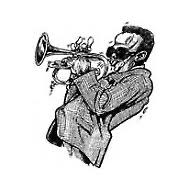 All About Jazz has been a pillar of jazz since 1995, championing it as an art form and, more importantly, supporting the musicians who make it. Our enduring commitment has made "AAJ" one of the most culturally important websites of its kind, read by hundreds of thousands of fans, musicians and industry figures every month.
All About Jazz has been a pillar of jazz since 1995, championing it as an art form and, more importantly, supporting the musicians who make it. Our enduring commitment has made "AAJ" one of the most culturally important websites of its kind, read by hundreds of thousands of fans, musicians and industry figures every month.

